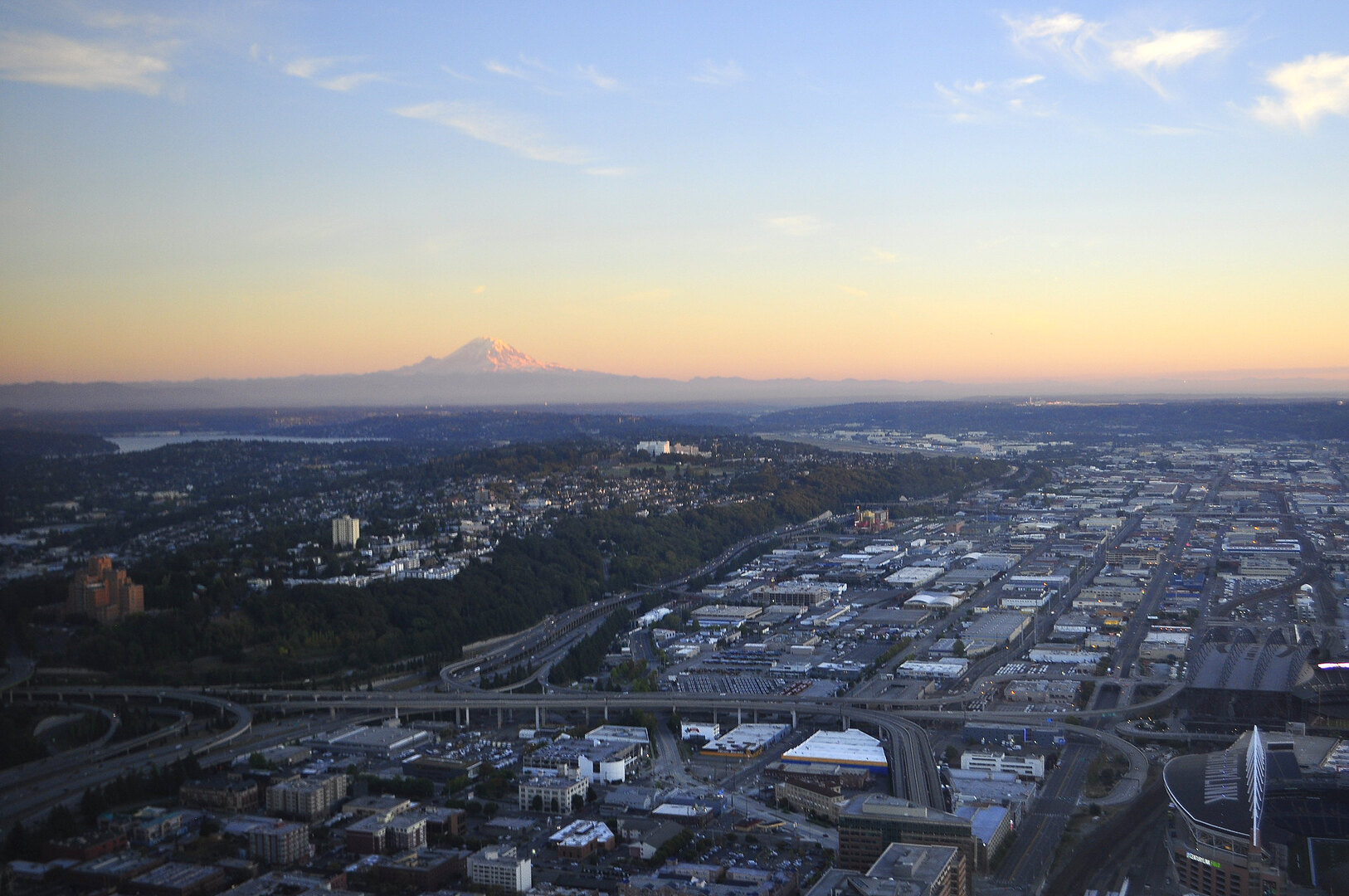Experience breathtaking panoramic views of the Pacific Northwest's most iconic volcano from the highest observation deck in Seattle

Mount Rainier, known to Native Americans as "Tahoma" or "Tacoma," stands as the crown jewel of the Cascade Mountain Range. This active stratovolcano rises dramatically from the surrounding landscape, its snow-capped peak visible from much of western Washington on clear days.
From Sky View Observatory's vantage point 900 feet above downtown Seattle, Mount Rainier appears as a majestic sentinel guarding the southern horizon. The mountain's glaciers, which contain more ice than all the other Cascade volcanoes combined, create a stunning visual contrast against the deep blue summer sky.
Mount Rainier is home to 26 named glaciers covering 35 square miles. It's the most glaciated peak in the contiguous United States and contains the largest single-peak glacial system.
June through August offers the clearest views with minimal atmospheric haze. Early morning light creates the most dramatic shadows on the mountain's glaciers.
December through February provides exceptional visibility. Fresh snowfall on the mountain creates a pristine white contrast against the clear winter sky.
March-May and September-November offer good viewing conditions. The changing seasons bring different atmospheric conditions and lighting.
Pro Tip: The best photography conditions occur when there are scattered clouds in the sky to add depth and drama to your Mount Rainier images.

Don't miss the opportunity to witness this natural wonder from Seattle's highest observation deck. Book your tickets today and capture memories that will last a lifetime.